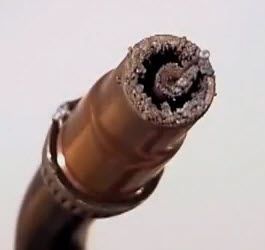Welding spatter
When we MIG weld, spatter will most likely appear. Spatter are leftovers of welding wire that have not melted with the weld puddle. We will see in this post, what are the main causes, the consequences and how to eliminate it.
Causes
Spatter are caused by different reasons. The main ones are the following:
- Mostly, it is caused by the relationship between current and voltage of our welding machine. Normally this occurs when the welding voltage is too low or the current too high for a certain combination of wire and gas. In this situation the arc is too cold, to keep the welding wire melted.
- The choice of welding gases also influences. CO2 improves the power of the arc and has a good value for money, but creates more spatter. Argon is normally used to compensate for the projections generated by CO2.
- Free wire length or “stick-out”. The stick-out is the distance from the contact tip to the piece to be welded. When this distance is too large, it will generate more projections (and also in all probability will cause porosity).
Consequences
Spatter that accumulates in the nozzle can detach and damage weld beads.
Another possible consequence of the accumulation of projections in the nozzle, can cause that we “short-circuit” the nozzle with the contact tip, proving that our welding cords are unusable and worse, cause accidents to the user.
A high quantity of spatter can reduce the lifespan of our consumables, which, although they are small pieces, play a very important role during the welding process.
Another possible consequence, can be problems with the wire feed. The accumulation of spatter at the end of the contact tip can obstruct the exit hole for the wire, causing an increase in the force necessary to extract the wire or even the wire to collapse.
How to clean welding torches affected by spatter
Manual torches
Regarding manual torches, there are people who use a flat screwdriver to scrape the inside of the nozzle. Others, hit the torch against the welding piece or the ground, to detach the “loose” projections. Both result in a deterioration of the torch
Many use specific pliers to remove excess slag from the contact tip, and they also insert them into the nozzle to clean it. If they are careful, it is also possible to use a blade to eliminate the excess of spatter, but without scratching the interior of the nozzle, or even with a piece of wood that does not damage the interior of the nozzle. It is also possible to use anti-spatter liquids to prevent the spatter to stick.
Robotic torches
The cleaning stations automate the cleaning process of the robotic welding torches. Although there are different technologies in the market, the predominant one is based on a set of pneumatic actuators with electrical control. Firstly, the wire excess is cut, then the torch is positioned at the outlet of a cylinder which, with a pneumatic piston, drives up a rotating reamer that cleans both the edge and the interior of the nozzle. Most manufacturers offer specific reamers depending on the nozzle model. Finally, an anti-spatter liquid is normally sprayed inside of the nozzle.
Joaquin Fernandez.
Share this article!
Contact the author for more info!

